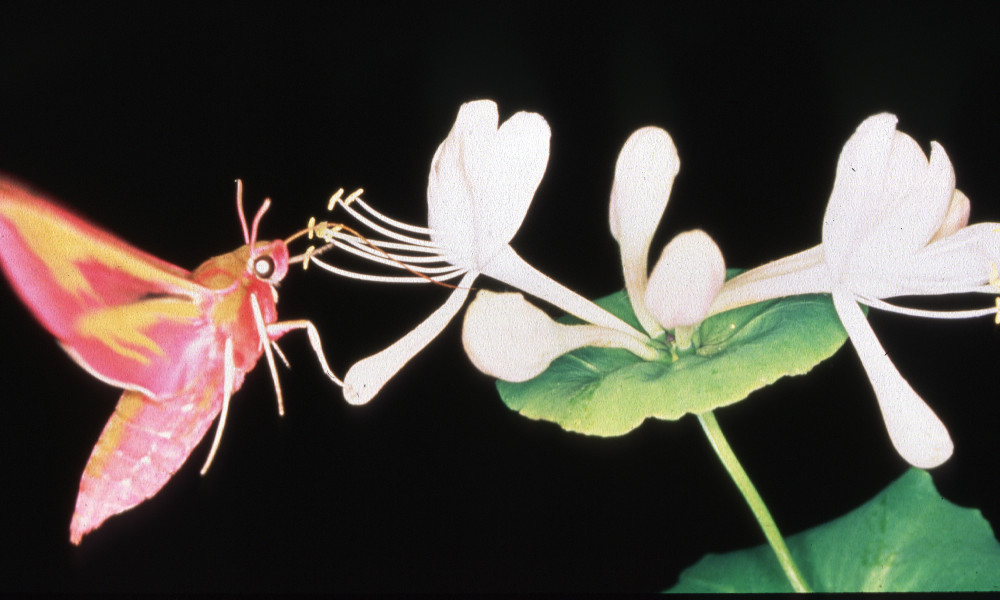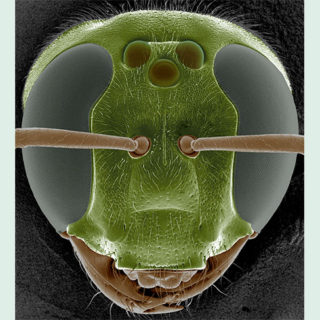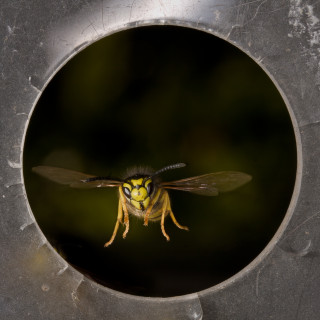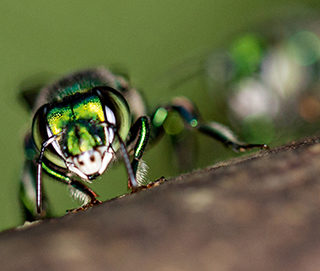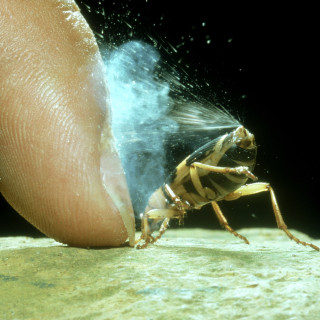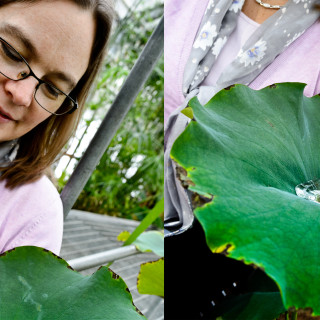Razor-sharp eyesight in the night-time jungle
Some insects have exellent nocturnal vision, despite having the same type of compound eyes as insects that are active during the day. Nocturnal bees in the rainforests of Panama can percieve light intensities that are 100 million times weaker than daylight!
HOW DO FLYING INSECTS IMPROVE THEIR EYESIGHT AT NIGHT? They have to take in as much light – as many photons – as possible. Combining incoming light signals from multiple faceted lenses in the optical part of the brain makes images appear brighter. However, this ‘spatial summation’ produces less detailed images. For insects, the main aim is to be able to see quick changes.
Other, slower insects use temporal summation of light instead. They take in light over a longer period of time when it is dark, which produces a brighter and more detailed image at the expence of the ability to percieve moments. This is the same principle as decreasing shutter speed on a camera.
Fifteen years ago, Professor Eric Warrent from the Department of Biology at Lund University developed a theoretical model that shows how insects improve their night vision. By measuring the signals from the eye, he could convert his results into a mathematical algorithm. Read more and see video here.
Text: Pia Romare
Photo: Michael Pfaff


